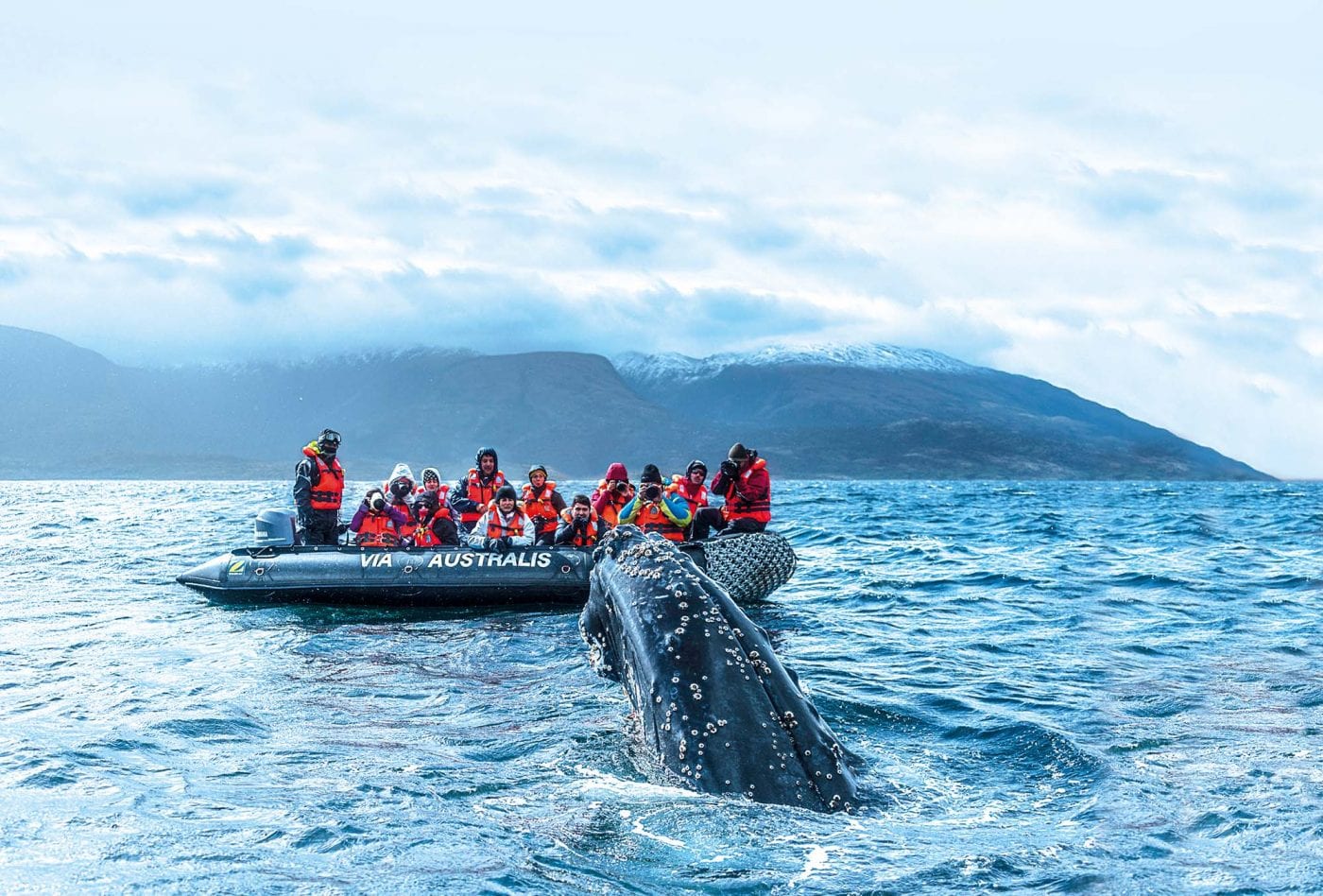By Elise Seymour
PATAGONIA, Chile
Named Ventus—the Latin for “southern wind” and a tribute to the archipelago of Tierra del Fuego’s distinctive weather—our voyage on Australis’s new 210-guest expedition vessel begins in the Chilean port city of Punta Arenas.
The ship’s roomy cabins have sizeable windows so we can take in the stunning views as our captain navigates Patagonia’s fjords and glacial channels. Onboard cuisine offers a variety of à la carte options for four-course dinners, with each dish paired with local Chilean wines.
Our excursion itinerary is all we’d hoped for and more. At Tucker Islets, we board Zodiacs to coast ashore and watch hundreds of Magellanic penguins. Our guide reminds us of the importance of not disturbing their habitat.
Ice ice baby
Our next stop: The majestic Pia Glacier, which hides in a secluded spot in a fjord along the Chilean Patagonia Coast. The glacier’s stature and beauty are mesmerizing. As we gaze at broken-off chunks of ice floating in the water, I’m reminded of the impact of climate change and the sobering fact that Patagonia’s glaciers are melting faster than any others in the world. I feel fortunate to be seeing them in their current state.
To cap off the day, Ventus glides through the stunning stretch of the Beagle Channel, aptly named Glacier Alley, where a string of glaciers tumble down from the Darwin Ice Field. Many of them are named for European countries—Holland, Italy, Germany, Spain and France. A nice touch: The crew serve a thoughtful food and beverage pairing dedicated to each country’s namesake glacier as the ship floats by.
At the end of the world
After a night off the grid, dawn finds us at Cape Horn, one of the most impressive parts of our voyage. Aptly termed “the end of the world, it’s as remote as it gets. Here, we find ourselves at the most southern-most point of South America, where the Atlantic and Pacific Oceans meet.
After our Zodiacs bank on the shore in rough waters, we climb several flights of stairs to get to the top off the cliff—and a breathtaking view. Possibly the most remote piece of land on Earth is surprisingly home to a lighthouse keeper, who has a year-long rotating position here. We imagine this must be about as isolated as it gets. Fortunately for us, Australis is one of the few cruise lines with permission for its passengers to set foot on the island, which affords us a surreal and memorable experience.

Later that afternoon we follow in Charles Darwin’s footsteps, going ashore in Wulaia Bay. Australis owns and preserves a portion of the land here and has created a small museum showcasing the history of the Yamana, the region’s indigenous people. A climb through the Magellanic forest lets us admire the lush vegetation and offers yet another exquisite view from our guide’s favourite lookout point.
The four-day cruise ends in Ushuaia, the most southern city in the world, straddling Argentina and Chile. Here, we spend a night at Los Cauquenes Resort & Spa, a member of the Small Luxury Hotels of the World group. It’s a serene retreat nestled between the snow-covered peaks of the Andes and the beach. If you get a chance to visit, enjoy gourmet dining at the restaurant and try the crab “three ways.”

More to explore pre- or post-cruise
Fly into Santiago and stay in the bohemian Lastarria neighbourhood at The Singular Santiago, a family-owned boutique hotel. A handpicked selection of Vogue covers greets us on entry to the rooftop bar, where we sip the bartender’s famous Pisco sour while taking in a stunning view of Santa Lucia Hill and Mount San Cristobal. If you’re lucky, you might even catch a glimpse of the house of the famous poet Pablo Neruda. For dinner, we suggest trying what will likely be the best lasagna you’ve ever had.
The Singular Santiago’s sister hotel, The Singular Patagonia, has breathtaking views of the Last Hope Fjord. The area was declared a national heritage sight in 1996, and should be on any jet-setter’s must-visit list. The hotel is an impressive property carved out of a cold-storage plant with a modern design, and doubles as a museum honouring its history. In the guest rooms and the spa, you’ll be wowed by the floor-to-ceiling windows that display the fjord’s dark blue water and the snow-capped Andes to perfection. A picture-perfect place to hide out and disconnect.










